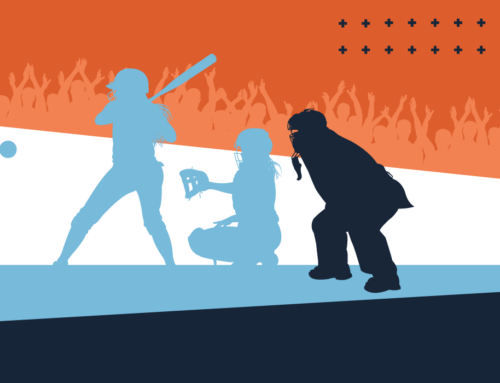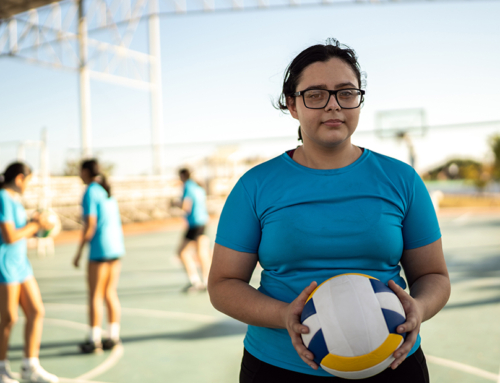Compared to other sports fields, the standard soccer pitch is humongous. It’s bigger than a football field, and it dwarfs the size of a basketball court or hockey rink.
When playing on such an expansive surface, communication is absolutely vital. No player can see everything going on around them, and that’s where verbal cues come in. To have success on the pitch, soccer teams and players must be able to effectively communicate with one another.
In crucial moments, teammates must be able to let a player know when to take a shot, when to make an extra pass and when to drop the ball off to slow the attack. Some teams may choose to have one player be the “vocal leader” on the field, while other teams may use the tiered system of communication, which means there is a player designated for being the eyes and voice of each area of the field. This is typically broken down into offense, midfield and defense. In my personal experience, it is best to have the defense controlled by the goalkeeper, as opposed to a player on the back line. The goalkeeper is able to see plays develop and let players know where he or she wants them to push the attacking offense.
There are many ways soccer players can provide verbal cues, but the best ones are short, precise and let the player know exactly what their best move should be. To be most effective, the commands should be no more than one to two words.
“Drop!”
The drop is called to signal the ball handler to pass the ball back to a teammate behind him or her. This means that there isn’t a play developing toward the goal and that the best option is to make a backwards pass to reset play and work the ball in a different direction. This can be very useful when attacking near the net and a clear shot isn’t available.
“Again!”
When a player yells “again!” it can mean one of two things. If the player has recently taken a shot and rebounded the ball, “again!” is called to tell the player to take another shot on goal. Generally this means that the keeper is still recovering from the previous save or the defense is out of position. If a player has just made a pass, “again!” can also notify the receiver to quickly look to make another pass. Typically this will signal a give-and-go, or let the new handler know there is a teammate open in better position.
“Backside!”
This is generally a defensive phrase used by the goalkeeper that signals to the defenders an unmarked offensive player that has snuck behind the defense and toward the back goalpost. This is used to help prevent crosses into an area the defense has left susceptible.
“Through!”
This calls for a player to send a through ball, or a pass that splits two defenders and plays an offensive player into space as he’s cutting behind the defense.
“Carry!”
Carry is a simple and effective call that notifies the ball handler they have a clear path and no defensive player is in position to challenge the ball.
“Man-On!”
This call signals to the ball carrier that a defender has approached them. This call is usually made when the defender approaches your teammate from their blind spot or behind them. This lets your teammate know that they should brace for a challenge, make a pass, make a move to evade the defender or take a shot.
“Challenge!”
The challenge call is given to signal the defending team that they have the freedom to pursue the ball handler. It’s used when the defense is in proper position and they can afford to let a player out of position to pursue the ball in an attempt to disrupt the offensive play.
“Clear!”
This one is pretty self-explanatory. This lets the ball carrier know they are being challenged and in a vulnerable position. The best play is to kick the ball far upfield away from danger or to kick the ball out of bounds and temporarily stop play.
“Contain!”
This is another defensive call that notifies the defender to play conservative defense and not aggressively attack the ball handler. The player receiving the contain call should make their best attempt to keep the attacking player in front of them and hold on until the defense can get into a better position.
“Keep!” or “Keeper!”
This verbal cue is only used by the goalkeeper. It simply means to clear out of the way and allow the keeper to make a play on the ball.
“Cross!”
This is a very common verbal cue and simply intends to notify the ball handler to look across the field for a cross.
“Switch Fields!”
Similar to the cross call, this call directs the ball handler to slow down the play and move the ball to the opposite side of the field for a better opportunity.
These are just some of the calls that can be used to help your teammates navigate the field when they don’t have eyes on the entire pitch. Some teams may find it best to have one player make all of the calls and be the “on-field captain” who is in charge of plays and ball movement. I found it best to have multiple players across the pitch using verbal cues as it ensures there’s never a lack of communication. Use these tips and commands to control the soccer pitch and help lead your team to victory.
Article originally posted on stack.com
READ MORE:




